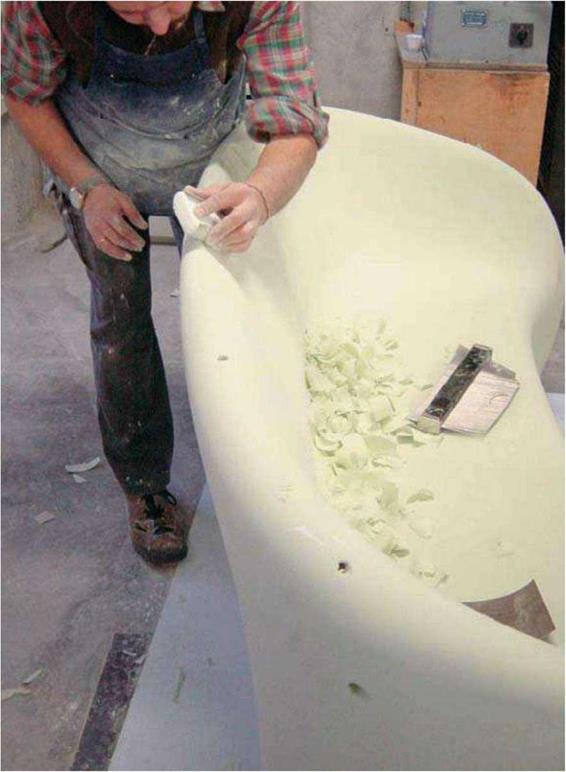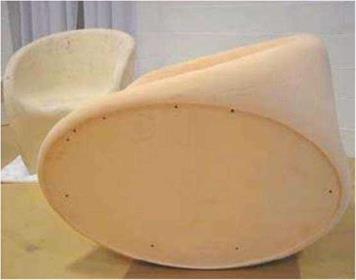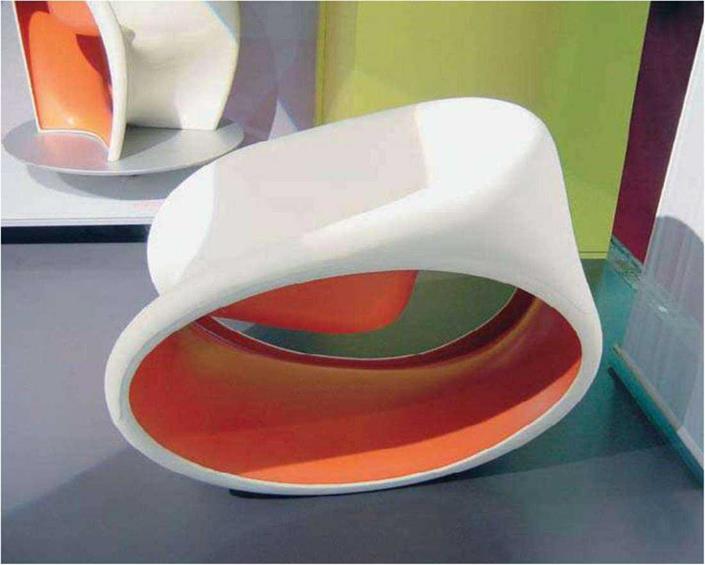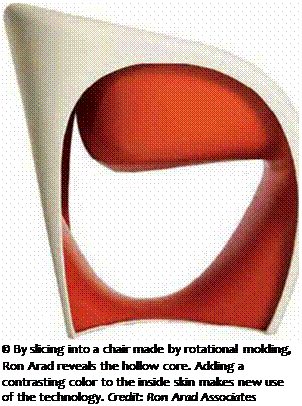 But the manufacturer Driade had asked Arad to work with them on a project, and they wanted to work in rotational molding. Arad was resistant for a variety of reasons. “It takes about thirty minutes between pieces,” he notes, “where with injection molding, every few seconds you get a new piece. Rotational molding is a bit like baking a cake. You have to heat it up, open it, and take it out. It’s favored by young designers because the tooling cost is a lot lower; its a fraction of the cost of injection molding, so if you are not anticipating doing a hundred thousand units a year, but only a few a year, rotation molding makes more sense,” he explains. “For that reason, because it had street credibility with young designers, manufacturers started to look at it. It makes each unit more expensive, but the whole process is cheaper. It is industrial, but semi-industrial. Rotational molding has some cautiousness built into it. It’s a dumb process.” But, Arad concedes, “It has its charm.”
But the manufacturer Driade had asked Arad to work with them on a project, and they wanted to work in rotational molding. Arad was resistant for a variety of reasons. “It takes about thirty minutes between pieces,” he notes, “where with injection molding, every few seconds you get a new piece. Rotational molding is a bit like baking a cake. You have to heat it up, open it, and take it out. It’s favored by young designers because the tooling cost is a lot lower; its a fraction of the cost of injection molding, so if you are not anticipating doing a hundred thousand units a year, but only a few a year, rotation molding makes more sense,” he explains. “For that reason, because it had street credibility with young designers, manufacturers started to look at it. It makes each unit more expensive, but the whole process is cheaper. It is industrial, but semi-industrial. Rotational molding has some cautiousness built into it. It’s a dumb process.” But, Arad concedes, “It has its charm.”
As Arad went ahead with the project, he uncovered something intrinsic to the rotational molding process that intrigued him: the pieces are hollow. “I wasn’t excited until I made sketches of pieces you cut into. That gave me the opportunity to reveal another color that is on the inside. If I didn’t cut the shape that came out of the oven, I would never see it; you would never know it existed. This is sort of the justification,” he notes. “You have to find something more interesting and exciting about the process, and I think we did.”
The MT series that emerged includes a chair, a rocker, and a sofa. Each is defined by a sensuous shape and a side cut that reveals the hollow inside of the piece, which features a contrasting color. “The themes that emerged are the cuts,” says Arad. “So it’s like a skin, an envelope. There is no illusion of volume, just the skin makes the chair, and it’s a two-tone skin —an inner and outer that gives you the chance to choose colors.”
Arad begins his design process with drawings —but not in the conventional sense of the word. “I came up with the shapes with a pencil,” he says and then quickly adds, “I’m telling a lie. I draw directly on the screen with a light pen, so all my sketches are drawn on the computer screen. I have a very big screen and I hardly use paper anymore,” he explains. “It’s a horizontal screen, and if you see prints you won’t know it’s not done in watercolor, crayon, or acrylic. I’ve been using it for a few years,” he says, “and I preach to all my friends to do the same, but for some reason I have not converted anyone really. I like it because I come from drawing, and it beats drawing. I like it so much, I went electric just like Bob Dylan did in Newport,” he quips.
|
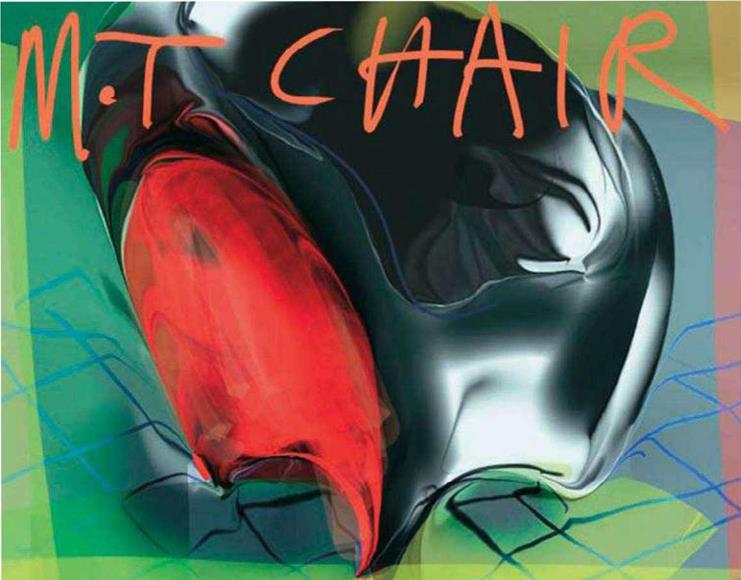
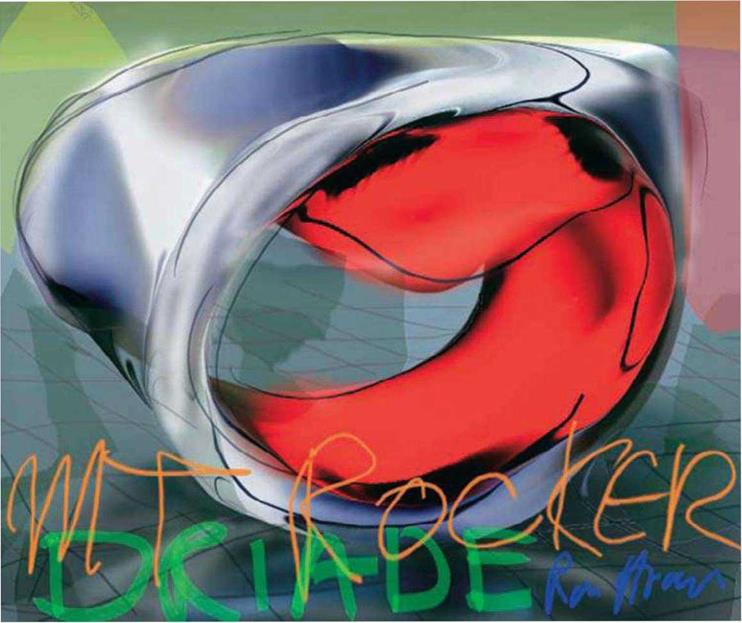
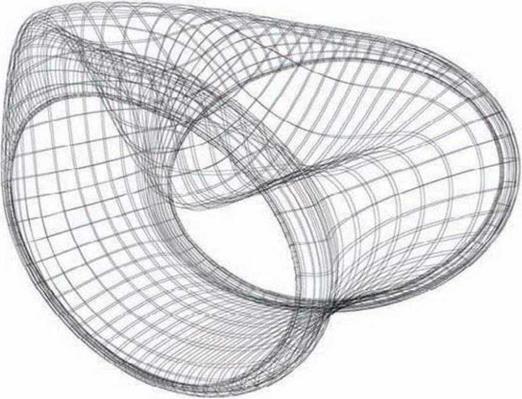
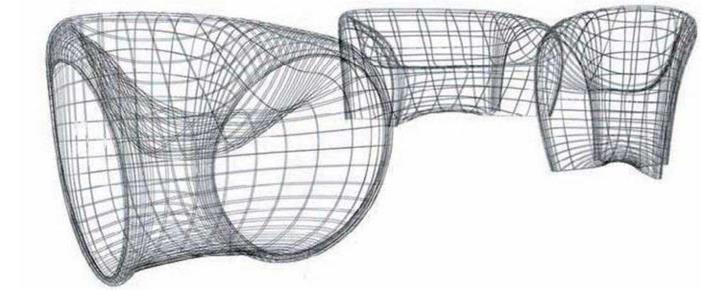 (<£) A wireframe 3D computer rendering of the MT rocker will be used to create the model that will, in turn, be used to create the mold.
(<£) A wireframe 3D computer rendering of the MT rocker will be used to create the model that will, in turn, be used to create the mold.
Credit: Ron Arad Associates
Wireframe computer renderings show the entire MT line of chair, rocker, and sofa, including the hollow core that openings in the side of each piece will reveal. Credit: Ron Arad Associates
|
Once the shape is drawn, Arad turns things over to designers probably too young to understand his reference to Bob Dylan’s 1965 plugged-in performance at the Newport Folk Festival. “My studio is full of whiz kids,” he says. “We turned my drawing into a 3D model on the computer. That virtual model was used to create a real model, then it was used to cut the tool, and then they make the piece,” he explains. “It is made as a container. There is just a different pigment in the inside,” he says. “First, you do the outside color, then you continue with the inside layer, and then they cut the sides with a very sophisticated cutting process that leaves it polished.”
As for the colors, Arad says, “This is my least favorite bit, when you finish a job and you have to choose colors for people you don’t know, to go to places you don’t know. There are no bad colors.”
When asked how he came up with the shape of the MT, Arad insists on the functionality of the piece and the practical concerns of the process. “You have to think when you design something you want to make the least number of parts for the mold, so all the shapes should release easily from the mold without undercuts. That implies some morphology.” When asked if the shape was influenced by other design periods or a desire to reflect some natural mood, Arad bristles a bit. “I wanted to do a chair. I don’t use words like organic. It’s all about sitting on it. It’s a chair. It has to sit well. Everyone is entitled to their own associations.
But it has to do with process and materials. I was never going to do a retro piece or a futurist piece. It’s just what I drew.” And the result of that drawing pleases him specifically because it works in such a straightforward way. “It doesn’t apologize for itself,” he says. “The rocker rocks, the chairs are very nice to sit on, they look nice. It has something to it that others don’t. They’re very friendly creatures, no if, ands, or buts about them.”
And the name? It refers to an earlier product, the Empty chair. “It’s a little empty, but you can’t call it Empty,” Arad explains. “So it’s almost the same. It’s like text messaging language.”
The process of creating the MT series has not changed Arad’s feelings about rotational molding. “I feel the same as I did before,” he says. “It’s not that I don’t like it. I just don’t want to do another one in a hurry. It has its place.” But he adds that the goal is always to find some inventive way to use whatever process is in front of you. “There’s no point in doing something unless there’s something new to do,” he says. “With every process, your duty is to find out what else can you do with it. Reluctance is a good place to start with anything. Because you have reasons why you are reluctant, and when you accept it, you have all the reasons to overcome your reluctance. It’s like people you don’t like at first, and then you like them a lot; it’s much better than people you like at first, and then go off of later.”
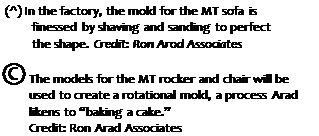 |
|
|
